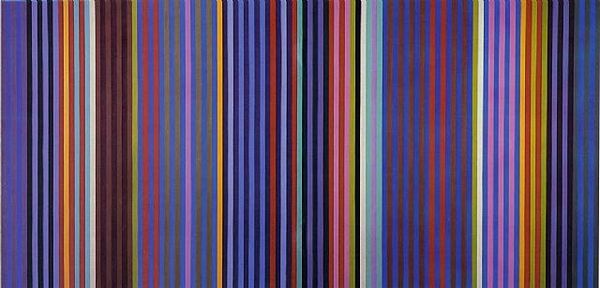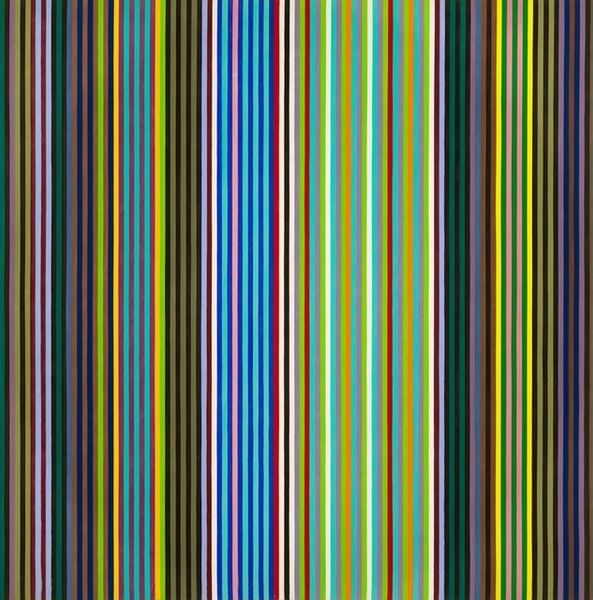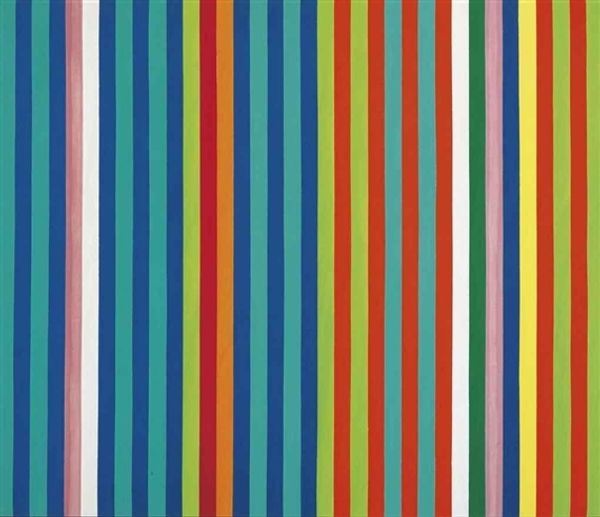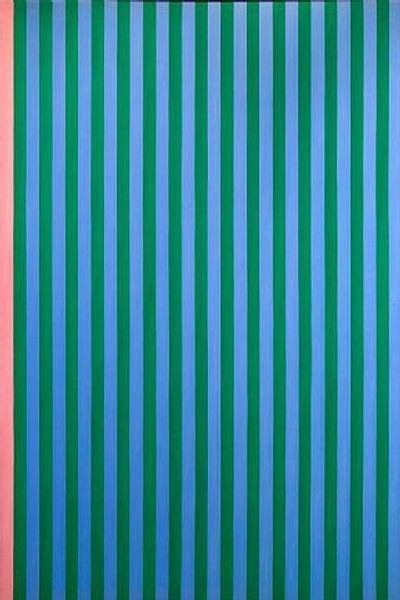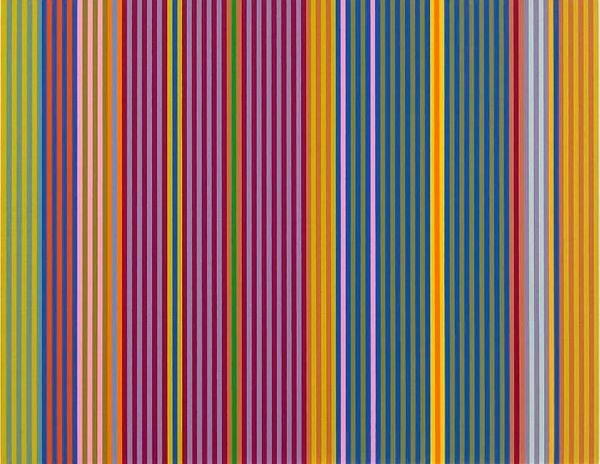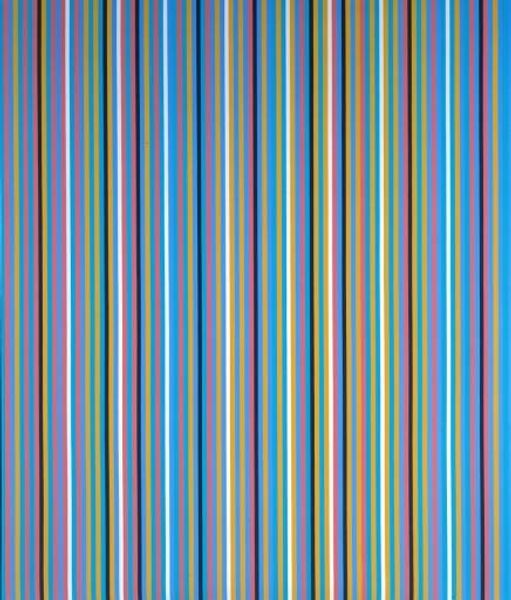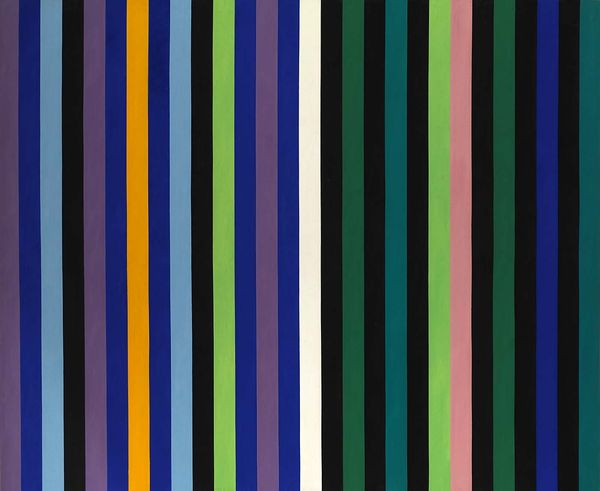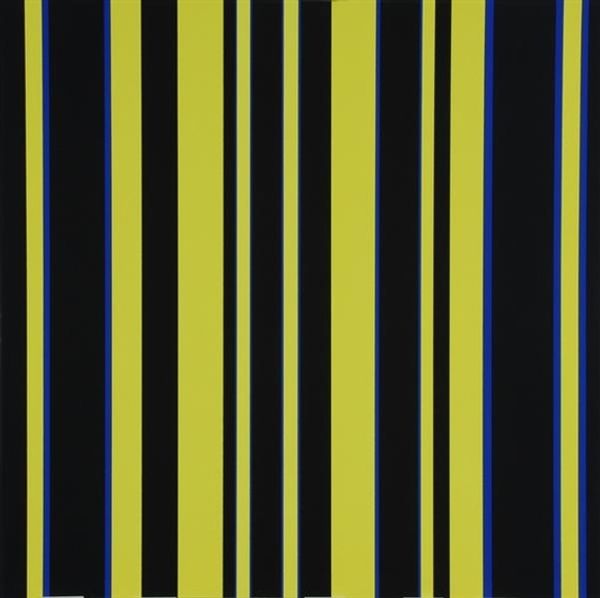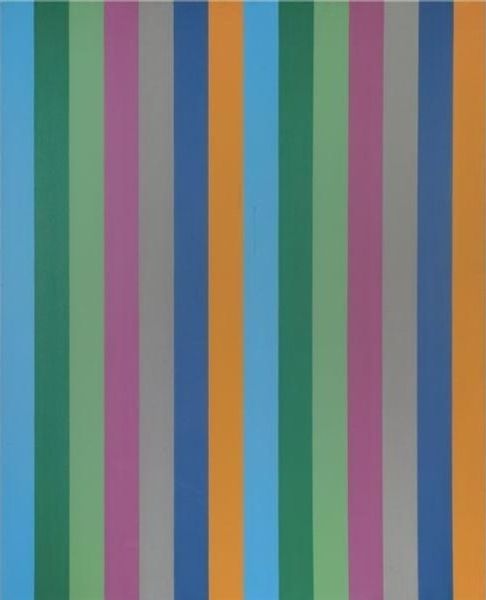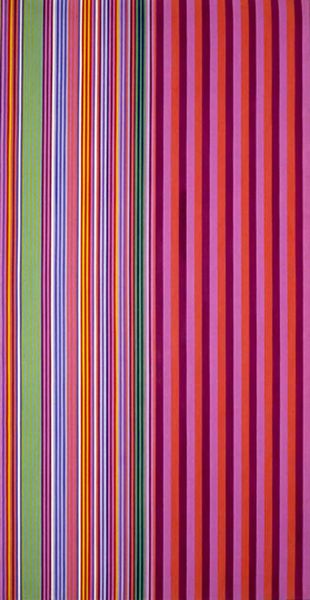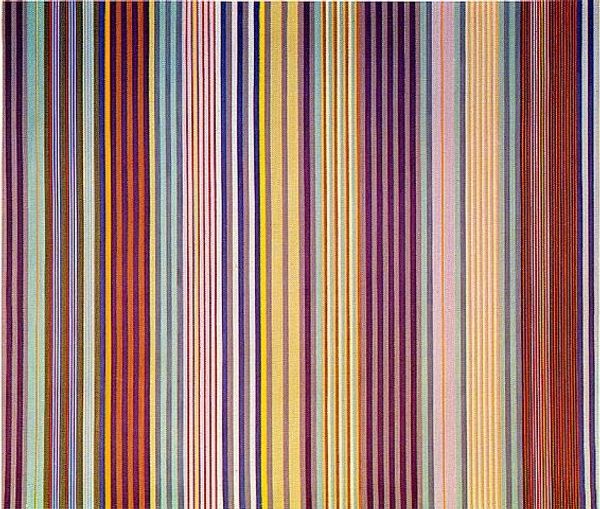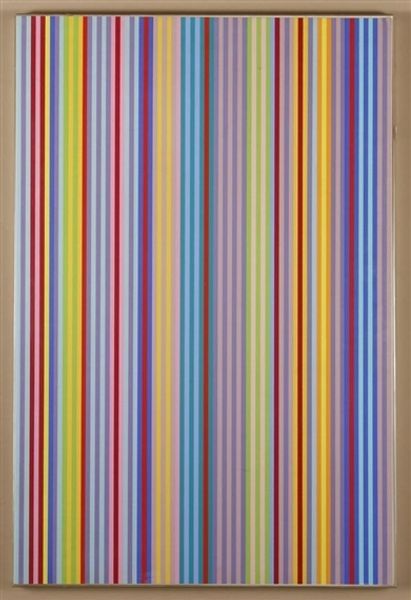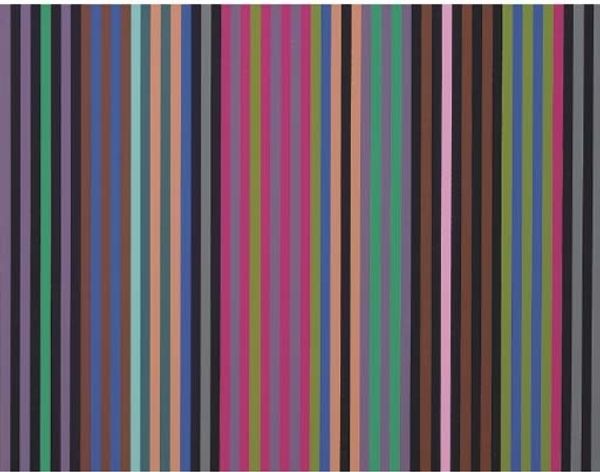
acrylic-paint
#
op art
#
colour-field-painting
#
acrylic-paint
#
geometric
#
geometric-abstraction
#
vertical pattern
#
line
#
modernism
#
hard-edge-painting
Copyright: Gene Davis,Fair Use
Editor: Gene Davis's "Green Stripes", created in 1970 using acrylic paint, is striking. I'm immediately drawn to its bold vertical lines, but the way the colours shift across the canvas is really what holds my attention. How do you interpret this work, especially considering its place in Color Field painting? Curator: It's more than just lines and colour, isn't it? To me, this piece embodies the political spirit of its time. Consider the social landscape of the 1970s in America. Movements for racial and gender equality were gaining momentum. Now, look at how Davis disrupts visual expectations with these unexpected colour combinations. Does the juxtaposition challenge notions of order and conformity? Editor: I hadn't really thought about it like that. It does feel like the painting is breaking away from more traditional artistic structures somehow, a kind of freedom... Curator: Exactly! The lack of a central focus invites a democratic viewing experience. The composition suggests that all parts are equal. Does that idea of equality have relevance when considering the socio-political landscape of the time? Furthermore, does colour operate symbolically for you in this context? Editor: I suppose so. I can see how that resonates. Each stripe, like each voice, having its place. The vibrant hues don't shy away; they demand attention. And how does his work challenge traditional artistic norms and gender expectations in art history? Curator: Color Field painting as a whole breaks away from narrative-driven art and Abstract Expressionism's perceived macho stance, and perhaps seeks new vocabularies in art making. In its flattening of perspective, does it undermine any sense of artistic hierarchy or ego? Editor: That's fascinating. It reframes how I see the painting – less about aesthetic pleasure and more about social commentary through abstraction. Curator: Indeed. And what we extract from this commentary might challenge how we position this work in modernism, broadly. Therein lies the continuing activism that art fosters, challenging both historical and contemporary understanding.
Comments
No comments
Be the first to comment and join the conversation on the ultimate creative platform.

